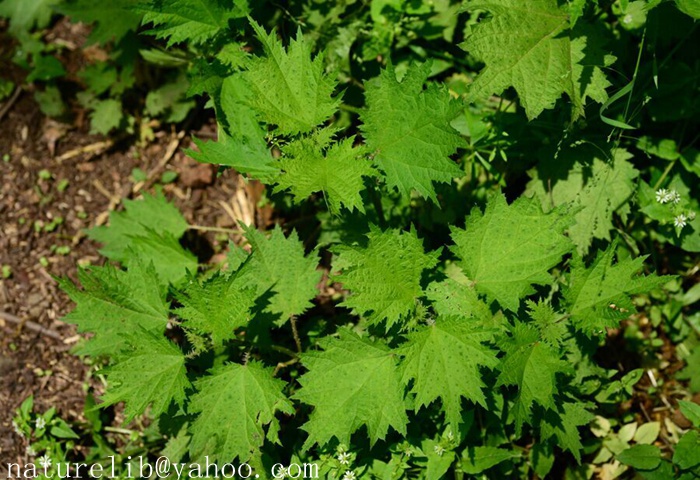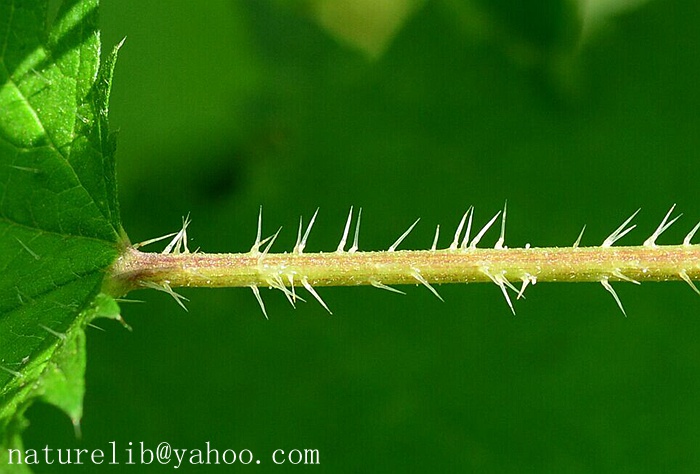大蝎子草 Girardinia diversifolia
- Scientific Name: Girardinia diversifolia (Link) Friis
- Ref: Kew Bull. 36:145. 1981
- Synonyms:
- Fleurya humulifolia Kunth
- Girardinia adoensis (Steud.) Wedd.
- G. chingianae S.S.Chien
- G. condensata (Hochst. ex Steud.) Wedd.
- G. cuspidata subsp. grammata C.J.Chen
- G. diversifolia subsp. ciliata (C.J.Chen) H.W.Li
- G. erosa Decne.
- G. formosana Hayata ex Yamam.
- G. furialis Blume
- G. hibiscifolia Miq.
- G. javanica Wedd.
- G. leschenaultiana Decne.
- G. longispica Hand.-Mazz.
- G. longispica subsp. conferta C.J.Chen
- G. palmata subsp. ciliata C.J.Chen
- G. suborbiculata subsp. grammata (C.J.Chen) C.J.Chen
- G. vahlii Blume
- G. vitifolia Wedd.
- G. zeylanica Decne.
- Urera palmata Gaudich.
- Urtica acerifolia Zenker
- U. adoensis Hochst.
- U. armata Kunth ex Wedd.
- U. buraei H.Lév. & Vaniot
- U. condensata Hochst. ex Steud.
- U. diversifolia Link
- U. ferocissima Sweet
- U. linkiana Heynh.
- U. lobatifolia S.S.Ying
- U. palmata Forssk.
- English Common Name: Himalayan nettle, Nilghiri nettle
- Chinese Common Name: 大蝎子草dà xiēzi∙cǎo, 掌叶蝎子草 zhǎngyè xiēzi∙cǎo, 大荨麻 dà∙qiánmá, 虎掌荨麻 hǔzhǎng qiánmá, 裂叶荨麻 lièyè qiánmá
- Japanese Common Name: ヒマラヤイラクサ [ヒマラヤ刺草] himarayairakusa
- Family: Urticaceae
- Genus: Girardinia
- Distribution: Forest margins, shady moist places, along streams, disturbed places, near villages; (?100-)300-2800 m. Chongqing, Gansu, Guizhou, Hebei, W Henan, Hubei, NW Hunan, Jiangxi, Jilin, Liaoning, E Nei Mongol, S Shaanxi, Sichuan, Taiwan, S Xizang, Yunnan, Zhejiang [Bhutan, India, Indonesia, Korea, Malaysia, Nepal, Sikkim, Sri Lanka; Africa (including Madagascar)].
- Photo: 04/17/2016, Hangzhou, Zhejiang
- Note: 荨麻 in the Chinese common name can be read as either qiánmá or xúnmá.
Herbs, annual or perennial, dioecious or monoecious. Stems often woody at base, straight, branched or not, 5-angled, 25-200 cm tall; stems and petioles spreading pubescent and armed with stinging and stigose hairs. Stipules oblong-ovate, 1-3 cm, sparsely strigose abaxially; petiole 2-15 cm; leaf blade light green, elliptic, ovate or oblate in outline, sometimes 3-lobed, 5-25 × 4-23 cm, herbaceous, 3-veined, lateral veins 3-5 each side, anastomosing before margin, abaxially sparsely pubescent and with armed stinging and setulose hairs, adaxially sparsely appressed strigose and armed with short stinging hairs, base cordate or subtruncate, margin usually 3, 5, or 7-lobed or, rarely, regularly serrate or sometimes doubly serrate at leaf base, apex short acuminate or acute; cystoliths minutely punctiform. Glomerules densely armed with stinging hairs. Male inflorescences in proximal axils, spicate, cymose-racemose or subpaniculate, 5-11 cm; female ones in distal axils of stem or in same axils as male, sometimes solitary, racemelike or paniculate, rarely long spicate, 1-28 cm, strigose and spreading hirsute. Male flowers subsessile or pedicellate, in bud 1 mm; perianth lobes 4, ovate, concave, setulose abaxially, apex acute, stamens 4; rudimentary ovary cupular. Female flowers ca. 0.5 mm; perianth lobes unequal, the larger connate lobe cymbiform, 0.4 mm, enlarged to 1 mm at fruit, sparsely strigillose on outside, apex 3-toothed, the smaller lobe linear. Achene dark brownish to gray-brown, subcordate to broadly ovoid, slightly compressed, 1.5-3 mm in diam., conspicuously verrucose. Fl. Sep-Oct, fr. Oct-Nov. (Flora of China)

04/17/2016, Hangzhou, Zhejiang
